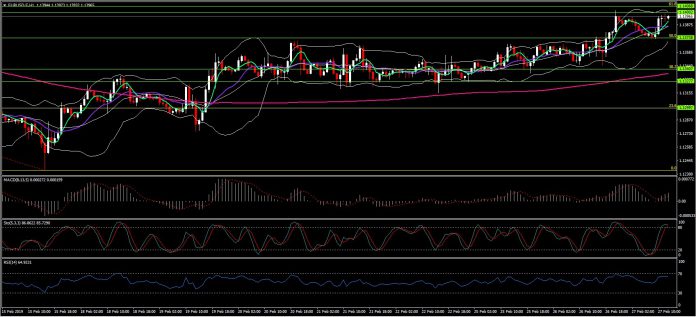The Dollar continued its drop against the Euro yesterday, after the Fed Chairman, Jerome Powell, commented that the Fed is taking a cautious look at the economy. Moreover, emphasis was placed on the patient, data-dependent approach to monetary policy, that the Fed has adopted since the January FOMC meeting.
Data releases have been quite supportive of the US slowdown, with January appearing to be much weaker than expected, a combination of the slowdown and the US government shutdown, as predicted in our post, published in mid January. Durable goods came out worse than expected, and so did the manufacturing indices; housing market data and the PMIs gave out mixed signals about the state of the economy. Even though the Case-Shiller index grew by 4.2% in December, this was a material decline compared to expectations of 4.5% and a growth rate of 5% in October.
In anticipation of the Powell testimony later today, the Trump – Kim Jong Un meeting, scheduled to take place in about an hour, can potentially have a strong impact on the Dollar. An agreement for the denuclearization of North Korea would beneficial for both countries as the US could benefit from another trade partner in the region, while opening the borders to exports and imports would certainly imply a brighter future for the Asian nation. Furthermore, it would also potentially provide the beginning of the end of the North-South Korea tensions, which have been going on since the end of WWII. Politically, an agreement with North Korea would mean a lot to Donald Trump, given the criticism he has received over multiple topics through the course of his presidential term. Notably, he could shift the focus away from Michael Cohen’s deposition today, who is expected to accuse the president of racism and lies. With regards to the rest of the world, a successful summit would also boost confidence for a trade deal between the US and China.
Technically, the EURUSD pair has been trading between the 50% (1.1374) and 61.8% (1.4068) Fibonacci levels, defined by the January 31st and February 15th lows. The two points technically provide the immediate Support and Resistance points, even though, with regards to Resistance, the 1.14 level is also likely to be a psychological level. At the moment, the short-term MA has crossed the long-term MA from below, while the remaining technical indicators are also supportive of this signal, as neither the MACD index nor the RSI suggest that the trend has ended.
Click here to access the Economic Calendar
Dr Nektarios Michail
Market Analyst
Disclaimer: This material is provided as a general marketing communication for information purposes only and does not constitute an independent investment research. Nothing in this communication contains, or should be considered as containing, an investment advice or an investment recommendation or a solicitation for the purpose of buying or selling of any financial instrument. All information provided is gathered from reputable sources and any information containing an indication of past performance is not a guarantee or reliable indicator of future performance. Users acknowledge that any investment in FX and CFDs products is characterized by a certain degree of uncertainty and that any investment of this nature involves a high level of risk for which the users are solely responsible and liable. We assume no liability for any loss arising from any investment made based on the information provided in this communication. This communication must not be reproduced or further distributed without our prior written permission.



















